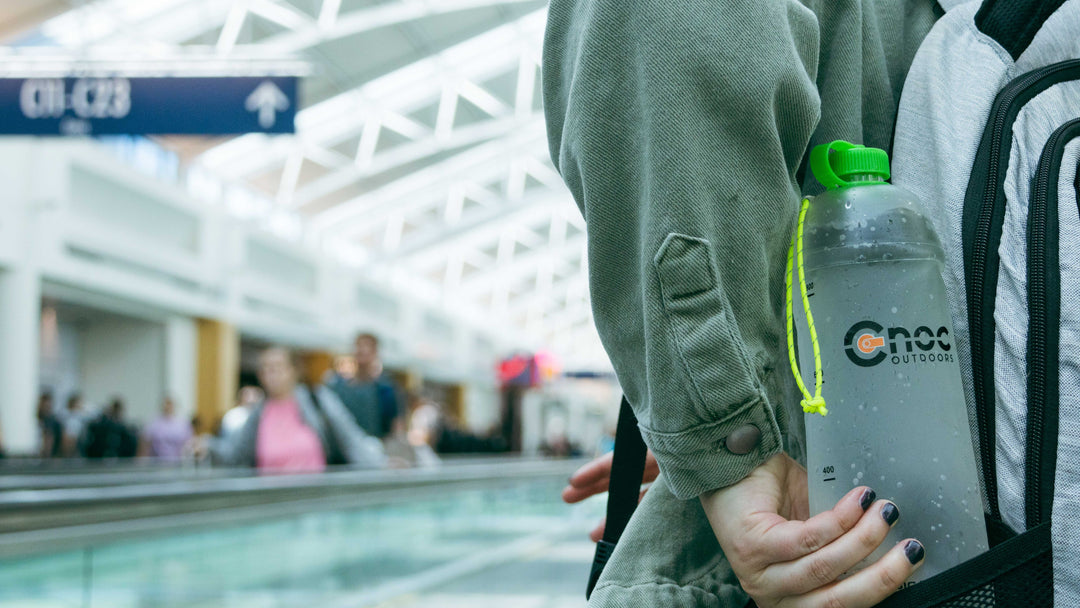Getting Into Solo Backpacking
Everyone who is into backpacking has been asked about going solo, and if you know of people who do solo backpacking, you must have wondered how they do it.
Let me start by saying that I spend most of my time outdoors by myself, completely. Rarely do I hike with any company and all my adventures are solo backpacking trips. The idea of going solo was born partially by accident and continued out of necessity and to get some of the “me time” effect.
The first time I went solo backpacking was while traveling in South America, specifically Chile, with a friend of mine. I had dragged him up and down a few mountains and we ended up in a small town called Pucon after a few days of backpacking in the Villarica national reserve. My friend was tired but I was so invigorated with my newly found hobby (backpacking, that is) and the size of the natural world, I wanted to go out again. After a couple of days of attempted persuasion, I was told a clear “NO,” so a decision was made – I would be going by myself. All this happened back in 2007, and the year before I had been in New Zealand where I did some solo hiking (day hikes), but nothing like I was planning now: I would be backpacking the Villarica Traverse from the Villarica volcano to the Lannin volcano – some 100km, passing 3 volcanoes (I only summited Lannin).
That trip along the Villarica Traverse, which took me great 4 days (I was a heavy and slow mover back then), introduced to something amazing: the freedom of solo backpacking with full control on time, pace, camping spots and breaks – a total sense of freedom. After that, I got the taste for it and continued backpacking most of the trails I could find along the Andes in Peru and Bolivia by myself (my friend had returned home by then).
Since that trip to South America I have gotten married, had a child and built a career, another child and a company, but the sentiment has not changed: solo backpacking is still total freedom, but now it is also a necessity as I hike faster, for longer days and for less time. I require more flexibility around my trips, so I’m unable to go with another person as the logistics of planning for other people complicates things. I do enjoy the company of others from time to time, but solo backpacking is the best solution for my outdoor “needs”.
Why solo backpacking?
I think I have made it pretty clear why I do solo backpacking, but why should you?
The ultimate freedom – from where to camp to pace, breaks or even where to go, it is all up to you. It does mean that you need to know all the camping skills, know how to hike responsibly, take care of your health and safety and most importantly know when to stop and when to avoid dangers. You might get the freedom, but it is also your responsibility.
No one makes stupid navigation errors and argues about it with you (unless it is you…), or looks over your shoulder or makes broad claims about where to go. On the other hand, your navigation skills need to be sufficient for your solo backpacking trip. It doesn’t mean you need to be a high-level orienteer or tracker, but you need to be able to deal with the trail ahead.
Every time you’ll climb a peak, source water, make food, navigate or accomplish anything else is because you have done it, and I don’t know of a better way to boost self esteem.
When you are camping, you can just read a book, look at the sunset or just lay down; there is no need to entertain anyone else. The need to upkeep a conversation with someone in your company means that you usually don’t get just quiet time to use at your own discretion. Solo backpacking gives you all the time to do as you wish. I usually read, write, think (I like doing that) or just meditate, mostly while looking at the view.
Other walkers and locals will be happy to chat and share a good story or a cup of coffee with you, as you are less intimidating when you are solo. There is something that seems vulnerable and open to people when they see a solo backpacker, so conversation starts easily and warmly.

You must get your skills up to scratch and you then get to practice them, all the time! As you have no one to fall back on if you are not sure/too tired/hate doing that, well, you have to do it yourself. This is a great opportunity to learn new skills, practice them and be just out of your comfort zone.
The physical and mental challenge is all yours to deal with, but solely yours to enjoy conquering, as you finish the day and find the perfect camping spot. Walking day in day out is hard, there is no question there, but there is a real satisfaction in getting to a perfect spot (or just one with great views), pitching your tent, getting your gear spread out and making a brew. That sitting at the end of a long day is almost meditative, especially when solo backpacking, allowing for a great time to clear the head and have a silent tap on one’s back.
A great character building tool: from self-esteem and sense of accomplishment to facing fears and real dangers, everything you do is thanks to you, you have done it. Every time you climb a peak, source water, make food, navigate or accomplish anything else is because you have done it, and I don’t know of a better way to boost self-esteem. The constant satisfaction and feedback from succeeding and the ability to pull yourself out when failing (it will happen every trip) are the best ways to feel really good about yourself. You will have to deal with your fears (from dark to spiders to wet feet) and conquer them because it is all up to you.
If dealing with your fears sounds daunting, don’t worry, they will come up along the way and you will barely notice them until the day ends. When solo backpacking you easily fall into the routine of being outside and all those less than great aspects of it just happen and you move on, you won’t even notice that your feet are wet…..

And now the downsides
As much as I like to tell myself otherwise, solo backpacking is not all roses and rainbows; there are some tough, frustrating and outright dangerous parts of it, but all those can be solved if you keep your cool and use the skills you have gathered. To name some downsides and how to address them:

The most obvious are the potential of injury and no rescue. When you are solo backpacking you are, well, alone – if something happens: a fall, a broken limb, fallen tree, animal attack etc, you will have no one to help or call for help if needed. This is probably the biggest problem with solo backpacking but can be solved easily with a variety of methods:
- Plan ahead and know your route, potential camping spots, and time frame. Leave a copy of those details with a couple of trusted people who will call for help if they haven’t heard from you in the time frame you have set.
- Be prepared for any potential animal threats such as bears, large cats etc with the right gear and skills for the area you are visiting. Check if there are any dangers and be ready for them.
- Carry a Personal Locator Beacon (PLB) device such as SPOT, DeLorme, etc.
- Be careful – this is probably the simplest but least used one: watch your step, know when to stop when you are too tired and prone to accidents, avoid unnecessary climbs and traverses, don’t confront animals and other people – you get the point. Just think before you do something and do a constant risk assessment.
The next downside is loneliness, which is the by-product of being alone for a while. I personally am not a people person (hence the solo backpacking) but when going out for 2, 3 or more days I miss my family, I miss talking to my wife and sharing my experiences. I have found a couple of ways to deal with this:
- Write a trip journal – take a pencil (better than a pen) and a small notebook and write notes, tell the story, share the adventure – the journal won’t answer back.
- Try and communicate – find a place with signal and call, it is simple. I know we are going outdoors to disconnect, leave the over-technological world behind, but if you have the means (phone with service or a landline), just call, you will all feel better.
- This is my secret and it is a little strange – talk. Talk with your pack, your walking poles, your shoes, all your gear. When you have had enough of them, just have a conversation with a person you know; you can probably predict their answers, just make the whole thing up. Just keep in mind that it only happened in your head, so don’t expect them to remember….
Low morale and physical difficulty are the also a big problem. The reason I put them both in the same category is because they are the same problem: not being “able” to do something is because you just can’t be bothered to. Low morale on the trail (or off trail) is a major problem and hits all hikers at some point, the problem is that you have no one to help you or kick you in the buns – you have to do it yourself. I find that just constantly challenging myself and giving myself small goals is the best way: reach that cliff in 50 minutes, etc. If I make it, I earn some brownie points with myself and boost my morale a little. Break your day into short and simple tasks to get on with it.
There are also fears, lack of skills, navigation errors and many more hurdles of solo backpacking, but I think those are all easily solved with more hiking, you just need to practice being outside and they are much less challenging.
Is it for you?
I know that solo backpacking is not for everyone – all I need to do is talk to my wife and I get it, she is happy to go with me but sees no point of going solo. That’s fine, but you need to try it. Solo backpacking is challenging and a little formidable, but it is a great experience (or not?) that you need to try before you say no to it.
To get into solo backpacking I recommend building up to it:
- Start by hiking solo – spending time with yourself all day long is the biggest part of solo backpacking.
- Spend a whole day outside, until it gets dark.
- Find an easy camping place (not an organized campground) to spend the night at; it can be 100 feet from your car, but you need to sleep in the tent….
- Camp in a place that is an inconvenient distance from your car, that distance that is just too far to turn back if things go off.
- Do a 2-day hike and spend the night in a place nearby with someone who you enjoy going outside with.
- Repeat the trip from before, but solo.
- Go on a 2-day backpacking trip solo in a new place.
- If you have made it to this point, you are ready for solo backpacking – just pick a route and go!
If you are a seasoned backpacker, thru-hiker, long distance hiker or anything in between, making the move to solo adventures is easy, just forget to call your hiking partner and you are set!


















Started solo backpacking twenty five years ago because I was getting frustrated with all the reasons previous backpacking partners could not make the trip. Although accustomed to going solo, there are always times of feeling alone (different from loneliness) – when used wisely, it is time to sense the amazing capacity within. Your capability to go solo naturally stretches your inner resourcefulness on mental, psychological and spiritual levels. These internal challenges can only improve your connection to the expansiveness of your true capabilities – merge with the surroundings and be open to what it can teach you – this all happens more readily when solo. And I still look forward to backpacking with a buddy, but it rarely happens. Solo again…..
I hiked the Entire John Muir Trail solo in 2018. I carried a Garmin inreach and sent messages to my kids every night. I hike solo because at 72 I do not travel fast and hate slowing down anyone I might hike with (took me 26 days to hike the 210 mile JMT) First time in my life I really understood the saying “Oh to be young again!”
Been solo backpacking for decades. Solitude is a thing of immense value and beauty. Longest solo trek: Appalachian Trail.
Do it all the time, backcountry ski, hike, cycle, backpack. Two reason, spur of the moment trips are super easy to put together, so I get more trips done, two, there are times the solitude is nice.. makes one more present I believe.
Solo Backpacking! I truly love the outdoors and really enjoyed reading your blog about your adventures with solo backpacking! The evenings – just resting, watching the sunset from wherever you are – can’t beat that! The pictures you shared were amazing!
<a “www.solarbackpacksource.com”>backpacking enthusiast
Leave a comment